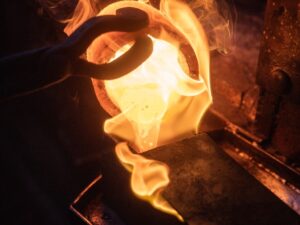Tambourah hits ‘multiple pegmatites’, stock hits seven-month highs

Picture: Getty Images
Tambourah has confirmed the presence of prospective lithium-caesium-tantalum pegmatites over more than 500m of strike at its RJ 101 project in Western Australia.
Assays of rock chips collected from these pegmatites returned elevated levels of rubidium, tin, caesium, tantalum and niobium, which are indicators of LCT pegmatites.
Tambourah Metals (ASX:TMB) has also purchased the Tambina project, which contains elevated lithium and rubidium in historical stream sediment samples.
“At the RJ 101 project, Tambourah has identified pegmatite swarms with some continuing over 500m in length and up to 8m high,” managing director Paul Araujo said.
“We are planning to identify and field test newly recognised pegmatite swarms at several locations within this large project area.
“There is no record of previous exploration for LCT bearing pegmatites within the granted exploration licences and we look forward to working with the Palyku people, Traditional Owners, to commence heritage surveys within this large project prior to exploration commencing.”
Lithium exploration
RJ 101 is part of the larger 600sqkm Russian Jack lithium project where up to half the area remains to be tested for potential LCT pegmatites.
The area hosts historical workings for tin and tantalum at several locations adjoining Tambourah’s projects.
Meanwhile, the new Tambina property (EL 45/3062) is being purchased from a private investor for $5,000.
Historical stream sediment sampling carried out at the project returned elevated lithium assay grades.
This article was developed in collaboration with Tambourah Metals, a Stockhead advertiser at the time of publishing.
This article does not constitute financial product advice. You should consider obtaining independent advice before making any financial decisions.
Related Topics

UNLOCK INSIGHTS
Discover the untold stories of emerging ASX stocks.
Daily news and expert analysis, it's free to subscribe.
By proceeding, you confirm you understand that we handle personal information in accordance with our Privacy Policy.








